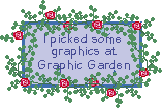Materials and SuppliesFabricsFabric Choices-- Buying Fabrics-- Preparing the Fabric for Use-- Fabric Grain-- The crosswise threads will stretch a little. The lengthwise threads will not stretch at all. Cutting the fabric at a 45-degree angle to the crosswise and lengthwise threads produces a bias edge which stretches a great deal when pulled (Figure 1).
. If templates are given with a pattern, pay careful attentioin to the grainlines marked with arrows. These arrows indicate that the piece should be placed on the lengthwise grain witht he arrow running on one thread. (Although it is not necessary to "examine" the fabric and find a thread to match it to, it is important to try to place the arrow with the lengthwise grain of the fabric.) (Figure 2)
Thread-- Choose a color thread that will match or blend with the fabrics in your quilt. For quilts pieced with dark and light color fabrics, choose a neutral thread color, such as a medium gray, as a compromise between colors. Test by pulling a sample seam. When you're ready to be "daring" ;) try using a contrasting color of thread for your quilt top. Sometimes, it will give an old tired design (to you not necessarily to anyone else!) a totally new "look." Batting-- Batting size is listed in inches for each pattern to reflect the size needed to complete the quilt according to the instructions. Purchase the size large enough to cut the size you need for the quilt of your choice. Some qualities to look for in batting are drapeability, resistance to fabric migration, loft and softness. If you are unsure which kind of batting to use, purchase the smallest size batting available in the type you'd like to try. Test each sample on a small project. Choose the batting that you like working with most and that will result in the type of quilt you need. Tools & Equipment-- Other sewing basics such as a seam ripper, pincushion, measuring tape and an iron are also necessary. For choosing colors or quilting designs for your quilt, or for designing your own quilt, it is helpful to have on hand graph paper, tracing paper, colored pencils or markers and a ruler. For making Nine-Patch quilts, a rotary cutter, matt and specialty rulers are often used. I recommend an ergonomic rotary cutter, a large self-healing mat and several rulers. If you can choose only one size, a 6"x24" marked in 1/8" or 1/4" increments is recommended. |
||||
Back  Next Next View Guestbook Sign  |

